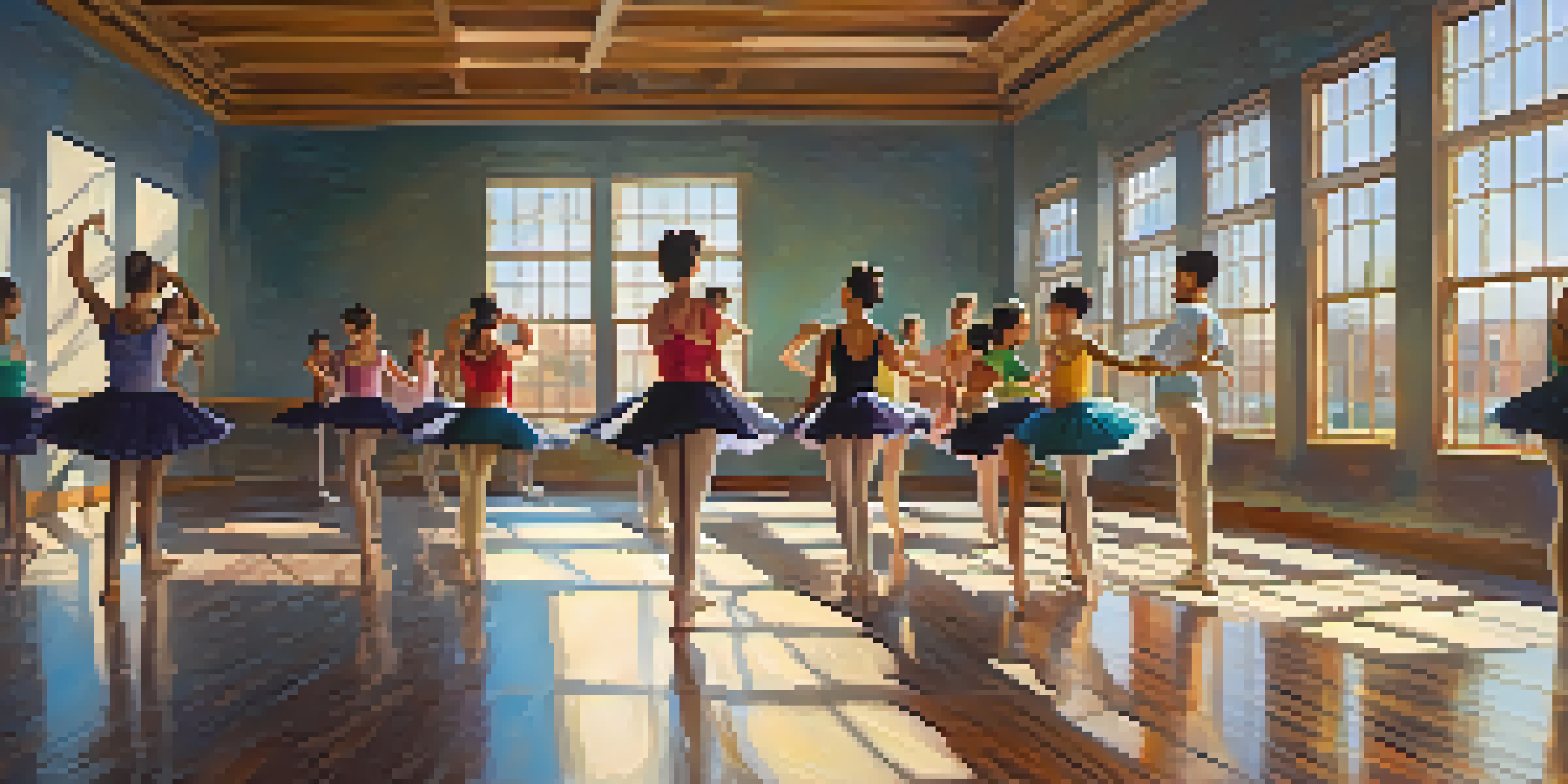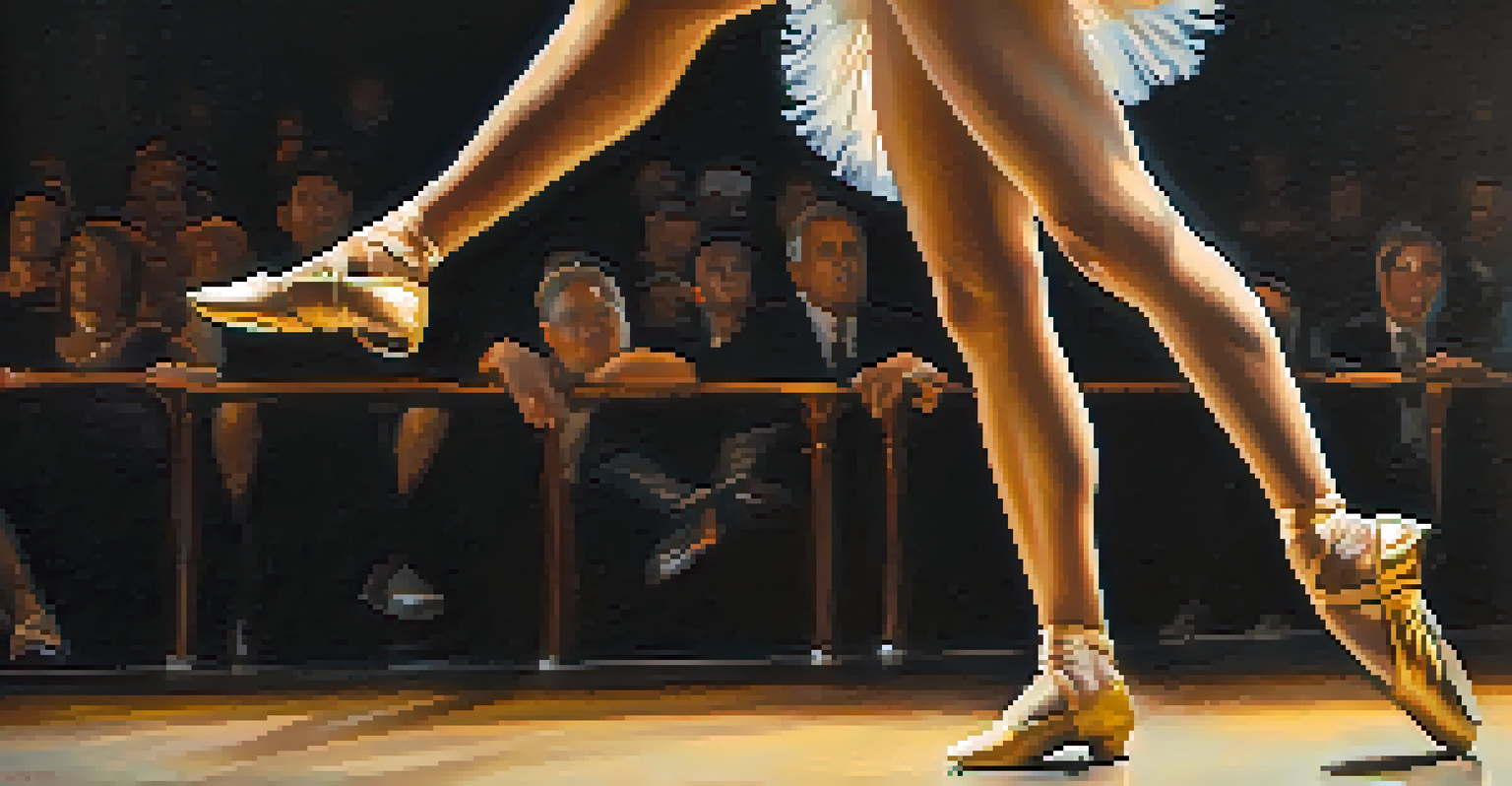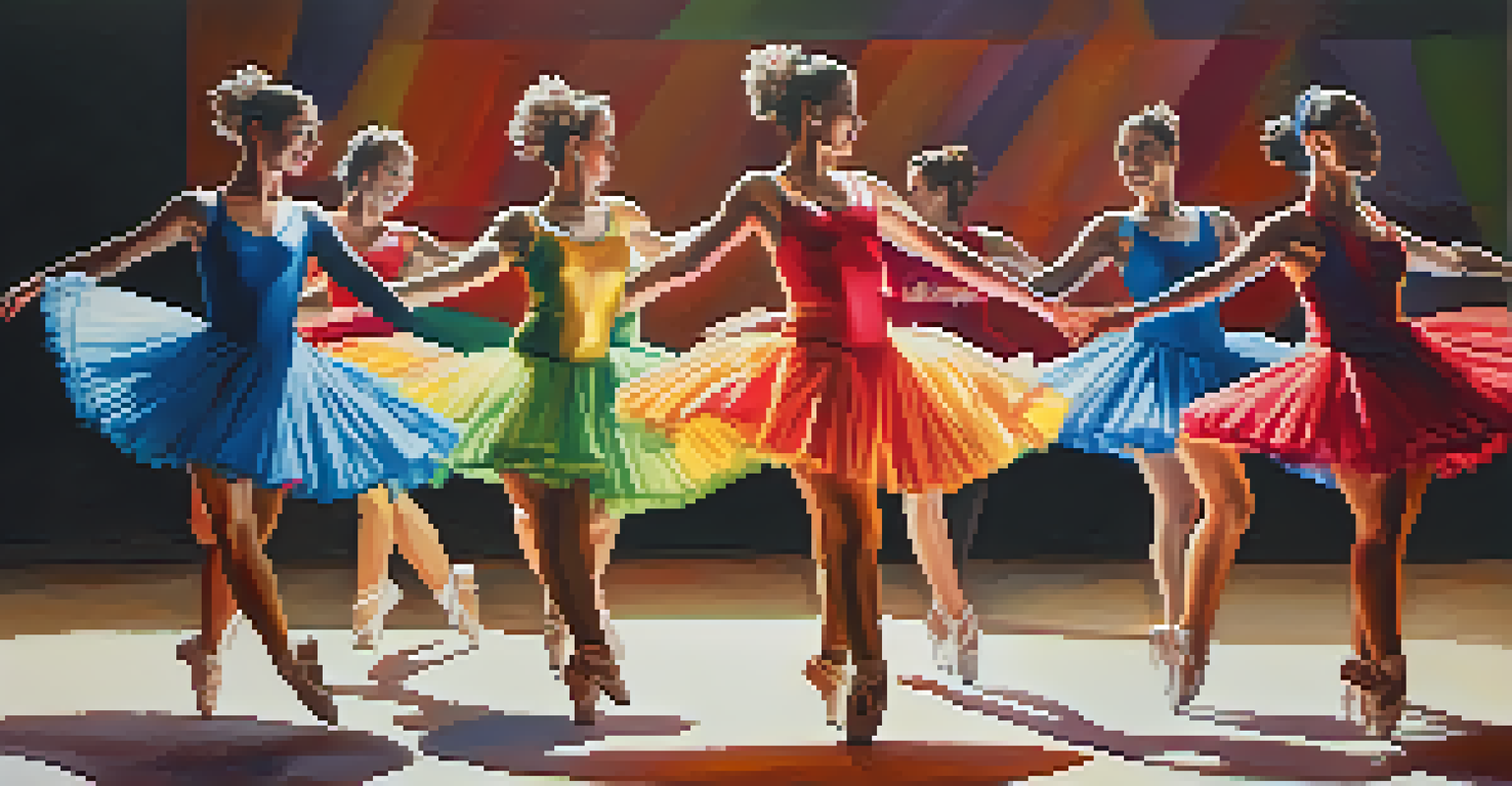Understanding Scoring Systems in Dance Competitions

The Basics of Dance Competition Scoring Systems
Dance competitions can be thrilling, but understanding how they are scored can be daunting. Generally, judges evaluate performances based on specific criteria, which influences the final score. These criteria often include technical skill, artistic expression, and choreography.
Dance is the hidden language of the soul.
Each of these elements plays a vital role in determining a dancer's overall score. For instance, while technical skill assesses the precision of movements, artistic expression evaluates how well the dancer communicates emotion. Choreography, on the other hand, looks at the creativity and structure of the dance routine.
Understanding these basics can demystify the competition experience and help dancers focus on the right areas for improvement. It’s like knowing the rules of a game before you play—having that knowledge empowers you to perform better.
Diving Deeper: Key Scoring Categories Explained
Most scoring systems break down into categories such as technique, artistry, and overall performance. Technique refers to the execution of moves, including footwork, posture, and balance. A strong technical foundation is crucial for dancers aiming to impress judges.

Artistry encompasses the dancer's ability to convey emotion and connect with the audience. This is where a dancer's personality can shine, making them memorable. Judges look for those magical moments where a dancer captivates the audience through expressive movement.
Understanding Dance Scoring Basics
Familiarizing yourself with scoring criteria like technical skill and artistic expression can enhance your performance in competitions.
The overall performance score combines both technical and artistic elements, reflecting how well a dancer integrates these aspects. It's like a puzzle where each piece must fit together perfectly to create a stunning picture.
Understanding Point Systems in Dance Scoring
Many competitions use a point system to quantify scores, often ranging from 1 to 100. This numerical representation makes it easier for judges to communicate their evaluations clearly. For example, a score of 90 might indicate an exceptional performance, while a score below 70 may suggest areas for improvement.
The only way to do great work is to love what you do.
Within this point system, judges often assign specific weights to different categories. This means that technique might carry more weight than artistry in some competitions, depending on the event's focus. Understanding this can help dancers tailor their training to meet competition expectations.
Furthermore, many competitions provide feedback alongside scores, allowing dancers to pinpoint strengths and weaknesses. This feedback is invaluable for growth, much like a coach's advice after a game.
The Role of Judges in the Scoring Process
Judges play a critical role in the scoring process, bringing their expertise and personal perspectives to the table. They often have extensive backgrounds in dance, whether as performers, instructors, or choreographers, which informs their evaluations. This experience allows them to recognize both technical excellence and artistic flair.
Each judge may have their own criteria and emphasis, leading to slightly varied scores for the same performance. This subjectivity is an inherent part of dance competitions, making it crucial for dancers to focus on their own growth rather than solely on the scores.
Judges Bring Subjectivity to Scores
Each judge's unique background and perspective can lead to varied scores, emphasizing the importance of personal growth over just the numbers.
Ultimately, judges aim to provide a fair and balanced evaluation of each dancer's performance. They are like the referees of a game, ensuring that every dancer is given a fair chance to shine.
Common Scoring Mistakes to Avoid
One common mistake dancers make is underestimating the importance of transitions. Smooth transitions between movements can elevate a performance, showcasing a dancer's control and fluidity. Judges notice these details, so being mindful of transitions can make a significant difference in scores.
Another mistake is failing to connect with the audience. A performance that feels disconnected—even if technically flawless—may not resonate as strongly with judges. Engaging with the audience is key, as it can enhance the emotional impact of the performance.
Lastly, neglecting to review feedback can hinder a dancer's growth. Constructive criticism is invaluable, providing insights that can lead to improvements. Embracing feedback is like having a roadmap that guides dancers toward their goals.
The Impact of Team Dynamics on Scoring
In group performances, team dynamics play a crucial role in the overall score. Judges look for synchronization, cohesion, and how well team members work together. A well-coordinated group can often outshine individuals with higher technical scores simply because they present a unified front.
Building strong team relationships fosters a sense of trust and collaboration, which translates into better performances. Think of it like a band—when everyone plays in harmony, the music is beautiful.
Team Dynamics Influence Scores
In group performances, synchronization and cohesion can outweigh individual technical prowess, highlighting the value of teamwork.
Moreover, group performances often carry the challenge of balancing individual expression with team unity. Dancers must find ways to shine as individuals while also contributing to the collective effort, creating a rich and layered performance.
Preparing for Competitions: Strategies for Success
Preparation for dance competitions goes beyond perfecting choreography; it involves mental and physical readiness. Dancers should practice consistently, focusing on both their strengths and weaknesses. Setting specific goals for each practice session can help maintain focus and drive.
Additionally, visualizing the performance can be a powerful tool. Many successful dancers use visualization techniques to mentally rehearse their routines, which can boost confidence and reduce anxiety on competition day. It's akin to rehearsing a speech in your mind before delivering it.

Finally, maintaining a positive mindset can greatly influence performance. Dancers who approach competitions with enthusiasm and confidence are more likely to connect with the audience and judges alike, making for a memorable experience.